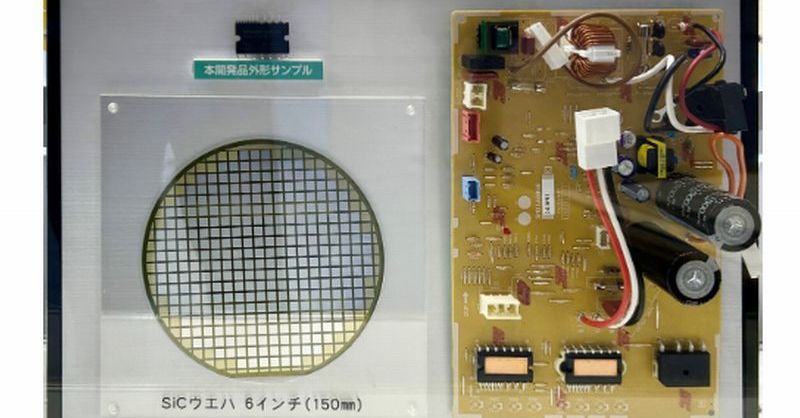New IPM with SiC: Lower AC Power Consumption – A Revolution in Energy Efficiency
The world is hungry for energy-efficient solutions, and the power electronics industry is answering the call. A significant leap forward has been made with the introduction of a new Intelligent Power Module (IPM) incorporating Silicon Carbide (SiC) technology. This innovation promises dramatically lower AC power consumption, offering substantial benefits for a wide range of applications. Let's delve into the details of this game-changing technology.
What is an Intelligent Power Module (IPM)?
An IPM is an integrated circuit that combines several power semiconductor devices, control circuits, and protection features into a single package. Traditionally, these modules have used IGBTs (Insulated Gate Bipolar Transistors), but the integration of SiC MOSFETs (Metal-Oxide-Semiconductor Field-Effect Transistors) represents a major advancement.
Advantages of Traditional IPMs:
- Simplified Design: IPMs reduce the complexity of power electronic designs by integrating multiple components.
- Reduced Board Space: Their compact size saves valuable space in electronic equipment.
- Improved Reliability: Integrated protection features enhance the overall reliability of the system.
The SiC Revolution: Why is it so significant?
Silicon Carbide (SiC) is a wide-bandgap semiconductor material with superior properties compared to traditional silicon. This leads to several key advantages in IPMs:
- Higher Switching Frequencies: SiC MOSFETs can switch at much higher frequencies than IGBTs, leading to smaller and more efficient power converters.
- Lower Switching Losses: The reduced switching losses directly translate to lower energy consumption and less heat generation.
- Higher Power Density: SiC allows for the creation of IPMs with significantly higher power density, meaning more power can be handled in a smaller footprint.
- Improved Efficiency: The combination of higher switching frequencies and lower switching losses results in dramatically improved overall efficiency. This is where the significant reduction in AC power consumption comes into play.
Lower AC Power Consumption: The Key Benefit
The lower AC power consumption achieved with SiC-based IPMs is a game-changer across multiple sectors. This translates to:
- Reduced Energy Bills: For consumers, this means lower electricity costs.
- Smaller Carbon Footprint: Lower energy consumption directly contributes to a smaller environmental footprint.
- Improved System Reliability: Less heat generation leads to increased reliability and longevity of equipment.
Applications of SiC IPMs: A Wide Range of Possibilities
The applications for these high-efficiency IPMs are vast and span various industries:
- Renewable Energy Systems: SiC IPMs are ideal for solar inverters, wind turbines, and other renewable energy applications, maximizing energy harvesting and grid integration efficiency.
- Electric Vehicles (EVs): Improved efficiency in EV powertrains contributes to increased range and reduced charging times. This is a crucial element in the ongoing drive towards widespread EV adoption.
- Industrial Automation: In factories and industrial settings, SiC IPMs enhance the efficiency of motor drives and other power-intensive equipment.
- Data Centers: With the ever-growing demand for data processing, energy-efficient IPMs are critical for reducing operational costs and environmental impact.
The Future of Power Electronics: Embracing SiC Technology
The introduction of SiC-based IPMs signifies a major step towards a more sustainable and efficient energy future. As the technology matures and costs decrease, we can expect even wider adoption across various sectors. This innovative technology promises a significant reduction in global energy consumption and a positive impact on the environment.
Learn more about the latest advancements in power electronics and SiC technology by subscribing to our newsletter (link to newsletter signup).
(Note: Remember to replace the placeholder "link to newsletter signup" with an actual link. Also, consider adding relevant internal and external links throughout the article to enhance SEO and user experience. Remember to use relevant keywords throughout, such as "SiC MOSFET," "Intelligent Power Module," "power electronics," "energy efficiency," "AC power consumption," etc., naturally within the text.)
